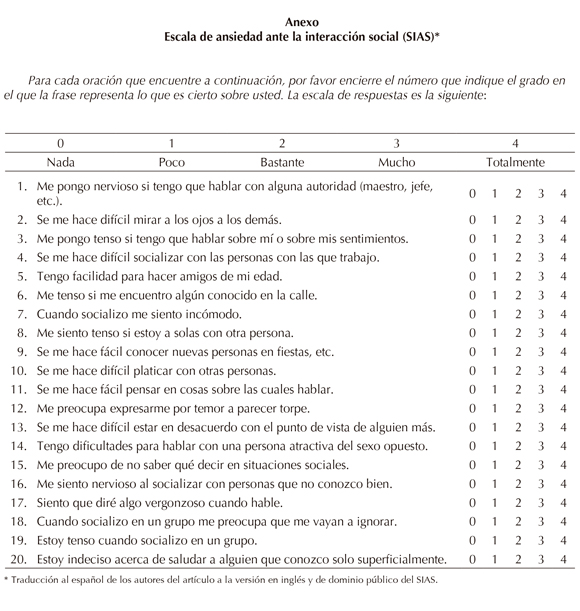

Importantly, the measures included in this review should not be interpreted as diagnostically significant for an anxiety disorder, even generalized anxiety disorder, but should be used to measure the presence of symptoms and to calibrate the severity of general symptoms of anxiety commonly occurring in rheumatic disease. However, subscales that have been used frequently in rheumatology as “stand-alone” measures, such as the anxiety scale of the Hospital Anxiety and Depression Scale, are included in this review. In addition, broader measures of psychiatric distress, including the Symptom Checklist-90, the General Health Questionnaire, and the Medical Outcomes Study Short Form 36 are not included in this review since they are included elsewhere in this special issue. Specifically, this author excluded measures typically used to evaluate diagnostic criteria or features of specific anxiety disorders, such as panic disorder, obsessive-compulsive disorder, posttraumatic stress disorder, and others.
#Beck anxiety scale scoring manual#
To maintain brevity, the majority of the measures reviewed here were selected to provide broad coverage of general symptoms of anxiety, and measures were excluded if they are intended to identify or characterize a specific Diagnostic and Statistical Manual of Mental Disorders, Fourth Edition (DSM-IV) anxiety disorder ( 1). For this review, the author included measures that were 1) measures of general measures of anxiety and severity of anxiety symptoms, 2) administered by self-report, 3) used in rheumatologic populations, and 4) has evidence of adequate psychometric data.
#Beck anxiety scale scoring how to#
US Panel Recommends Depression Screening for Adolescentsįind out how to use this test in your telepractice.This review covers commonly used measures of anxiety.Progress reports features a graphical display of inventory-by-inventory changes in an examinee's scores for up to five BYI-2 administrations. Sample reports contain examinee and test information, a graphical representation of the examinee's T scores, cumulative percentage, and severity level. Self-Concept Inventory: Taps cognitions of competence, potency, and positive self-worth.Disruptive Behavior Inventory: Identifies thoughts and behaviors associated with conduct disorder and oppositional-defiant behavior.Anger Inventory: Evaluates a child's or adolescent’s thoughts of being treated unfairly by others, feelings of anger and hatred.Anxiety Inventory: Reflects children's and adolescents’ specific worries about school performance, the future, negative reactions of others, fears including loss of control, and physiological symptoms associated with anxiety.It includes items related to a child's or adolescent’s negative thoughts about self, life and the future, feelings of sadness and guilt, and sleep disturbance. Depression Inventory: In line with the depression criteria of the Diagnostic and Statistical Manual of Mental Health Disorders Fourth Edition (DSM-IV), this inventory allows for early identification of symptoms of depression.Children and adolescents describe how frequently the statement has been true for them during the past two weeks, including today. Align assessments with DSM-IV criteria and IDEA compliance needs.įive inventories each contain 20 questions about thoughts, feelings, and behaviors associated with emotional and social impairment in youth.Identify potential vulnerability to bully/victimization.Identify impaired children for referral to more extensive assessment services.Assess adolescents with special needs and low reading level.Monitor response to interventions and track students over time on the same group of integrated instruments.Save time with brief screening tools to use by gatekeepers, and ability to administer individually or in a group.BYI-2 assesses symptoms of depression, anxiety, anger, disruptive behavior, and self-concept.


 0 kommentar(er)
0 kommentar(er)
